Exploring The Ancient Pyramids of Egypt
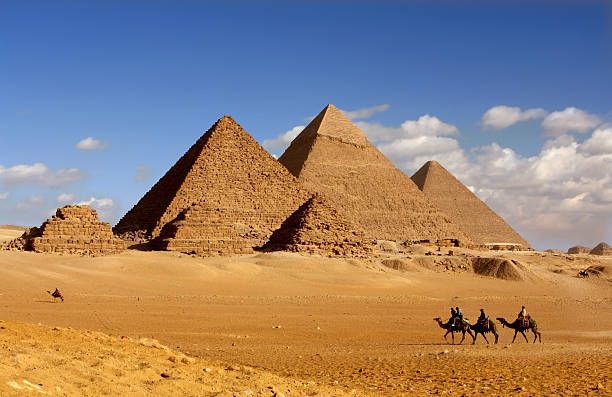
Egypt, officially known as the Arab Republic of Egypt, is a country located in the northeastern part of Africa. It is bordered by the Mediterranean Sea to the north, Sudan to the south, Libya to the west, and Israel and the Gaza Strip to the east.
With a population of over 100 million people, Egypt is one of the most populous countries in Africa and the Middle East.
Egypt is renowned for its ancient civilization, which dates back to over 5,000 years ago. The country is home to some of the most iconic landmarks in the world, including the Great Pyramids of Giza, the Sphinx, and the temples of Luxor and Karnak.
These ancient monuments attract millions of visitors every year and are a testament to the impressive engineering and architectural skills of the ancient Egyptians.
The history of Egypt is incredibly rich and diverse, with the country being ruled by various dynasties throughout its existence.
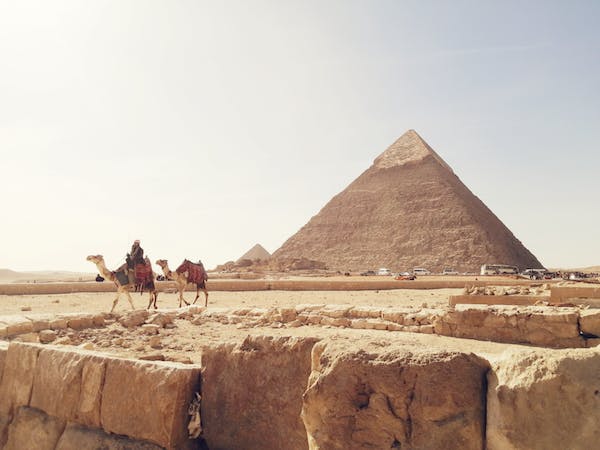
One of the most significant periods in Egyptian history was the Pharaonic era, which lasted from around 3100 BC to 30 BC.
During this time, Egypt was ruled by pharaohs, who were believed to be descendants of the gods.
The pharaohs built massive temples and tombs, which still stand today and provide a glimpse into their advanced civilization.
In addition to its impressive history, Egypt is also renowned for its natural beauty. The country is home to the Nile River, which is the longest river in the world and provides a lifeline to millions of people in the region.
The Nile is also home to some of the most stunning landscapes in Egypt, including the Aswan Dam, Lake Nasser, and the Nile Delta.
Another natural wonder in Egypt is the Red Sea, which is home to some of the world's most beautiful coral reefs.

These reefs are a haven for divers and snorkelers, who come to explore the stunning underwater world and see the vibrant marine life that calls it home.
Egypt is also renowned for its vibrant culture and cuisine. Egyptian food is a delicious blend of Middle Eastern and Mediterranean flavors, with dishes like koshari, ful medames, and hawawshi being popular among locals and tourists alike.
Egyptian music and dance are also an integral part of the country's culture, with belly dancing being one of the most famous forms of dance in the world.
Despite its rich history and vibrant culture, Egypt is not without its challenges. The country has faced political instability in recent years, with protests and unrest leading to changes in government.
The country has also struggled with poverty and high unemployment rates, particularly among young people.
However, despite these challenges, Egypt remains a fascinating and unique destination for travelers from all over the world.
From the iconic pyramids to the stunning coral reefs of the Red Sea, there is something for everyone in this ancient and remarkable country.
Exploring the ancient pyramids of Egypt
Exploring the ancient pyramids of Egypt is a bucket list experience for many travelers. These iconic structures are a testament to the impressive engineering and architectural skills of the ancient Egyptians and continue to fascinate people from all over the world.
The Great Pyramid of Giza
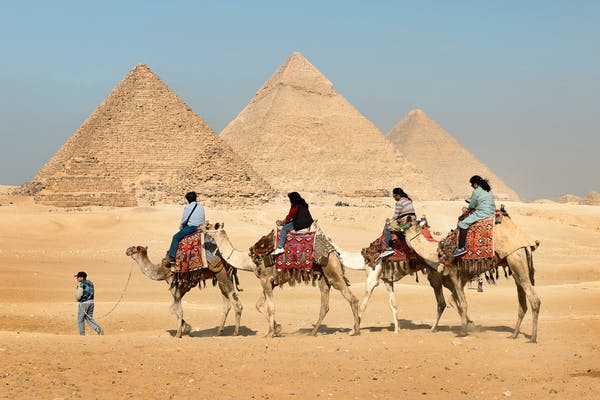
The Great Pyramid of Giza is one of the most iconic structures in the world and is the largest of the three pyramids located on the Giza plateau in Egypt.
It was built as a tomb for the Pharaoh Khufu during the 26th century BCE and is believed to have taken over 20 years to construct.
The pyramid was originally 146.5 meters tall, although erosion and the loss of the capstone have reduced its height to 138.8 meters today.
The Great Pyramid of Giza is an engineering marvel and is made up of an estimated 2.3 million limestone blocks, each weighing between 2.5 and 80 tons.
The precision with which the blocks were cut and placed is still a mystery to this day, with many theories regarding the methods used.

Some suggest that ramps were used to transport the blocks up the pyramid, while others argue that a system of internal ramps was used.
Inside the pyramid, there are three chambers, including the King's Chamber, the Queen's Chamber, and a subterranean chamber.
The King's Chamber is the largest and most ornate and contains a granite sarcophagus. The Queen's Chamber is smaller and less ornate and was likely a symbolic chamber rather than a burial chamber.
The subterranean chamber was likely intended to be the original burial chamber but was abandoned during construction.
The Great Pyramid of Giza has captivated people's imaginations for centuries, and there are many theories about its purpose and construction.
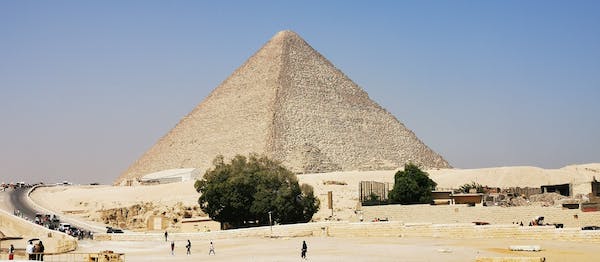
Some believe that it was built as a tomb for the Pharaoh Khufu, while others suggest that it was an astronomical observatory or even a power plant.
The alignment of the pyramid with certain constellations and the presence of airshafts that align with certain stars have led some to believe that the pyramid had a celestial purpose.
Today, the Great Pyramid of Giza remains one of the most popular tourist attractions in Egypt, attracting millions of visitors each year.
Exploring this incredible structure is an experience like no other, as you walk through the narrow corridors and marvel at the massive stones that were used to construct it.
The Great Pyramid of Giza is a testament to the incredible engineering and architectural skills of the ancient Egyptians and continues to fascinate people from all over the world.
The Sphinx
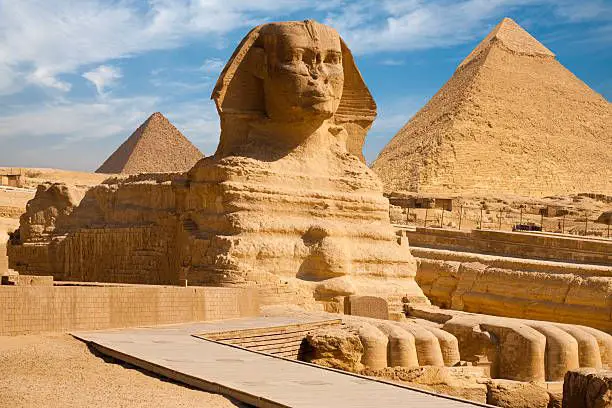
The Sphinx is a massive statue located on the Giza plateau in Egypt, near the Great Pyramid of Giza. The statue depicts a mythical creature with the head of a human and the body of a lion, and it stands at over 20 meters tall and 73 meters long.
The Sphinx is one of the most iconic structures in Egypt and is believed to have been built during the reign of the Pharaoh Khafre, who ruled Egypt during the 26th century BCE.
The Sphinx is made of limestone and was likely carved directly out of the bedrock. The face of the statue is believed to represent the Pharaoh Khafre, although this theory is still debated by scholars. The Sphinx was originally painted with bright colors, although the paint has long since faded away.
Exploring the Sphinx is an awe-inspiring experience, as you stand at the base of this massive statue and imagine the incredible skill and expertise that went into its creation.
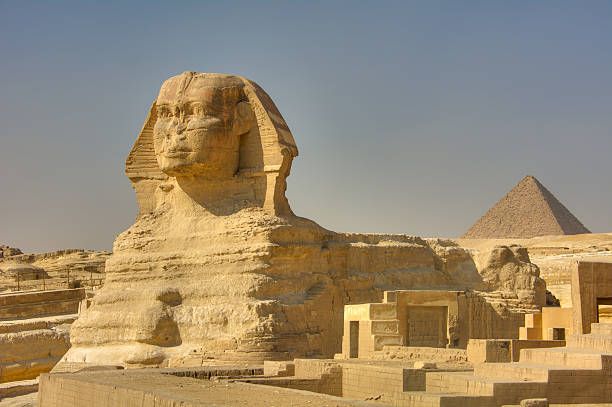
The Sphinx was carved with remarkable precision, with intricate details such as the curls of the hair and the folds of the headdress clearly visible. The Sphinx is also notable for its unusual posture, with its front paws outstretched in front of its body.
The Sphinx has undergone many restorations throughout its history, with the most recent restoration taking place in the early 2000s.
The restoration involved repairing damage caused by erosion and pollution and ensuring that the statue remains stable for future generations to enjoy.
The Sphinx remains one of the most popular tourist attractions in Egypt, attracting millions of visitors each year. Visitors can explore the statue up close and marvel at the incredible engineering and artistic skills of the ancient Egyptians.
The Sphinx is a testament to the enduring legacy of this remarkable civilization and continues to inspire awe and wonder in people from all over the world.
Pyramid Construction
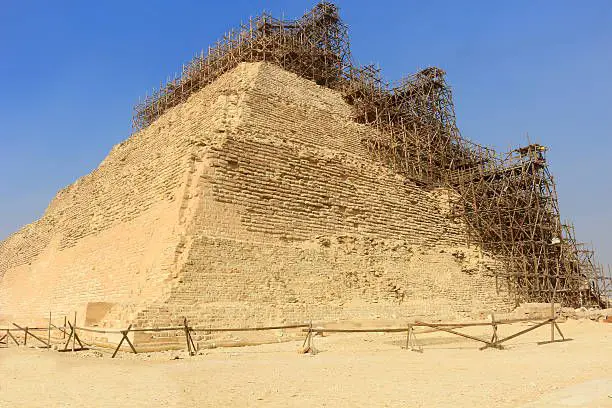
The construction of the pyramids in ancient Egypt is a remarkable feat of engineering and architecture that continues to captivate people's imaginations today.
The pyramids were built as tombs for the pharaohs of Egypt and were intended to protect their bodies and ensure their safe passage into the afterlife.
While there is still much that remains unknown about the construction of the pyramids, scholars have developed several theories about how these massive structures were built.
One of the most popular theories about pyramid construction involves the use of ramps. According to this theory, the ancient Egyptians constructed ramps that were used to transport the massive blocks of limestone and granite up the pyramid.
As the pyramid grew taller, the ramps would be extended and repositioned to allow workers to continue building. While this theory seems plausible, there is still much debate over how the ramps were constructed and how they were able to support the weight of the massive stones.
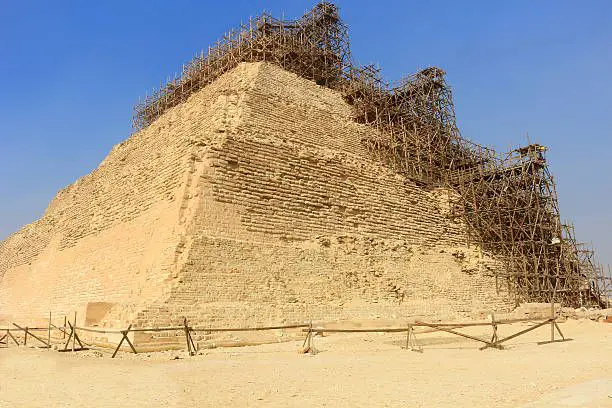
Another theory about pyramid construction involves the use of internal ramps. According to this theory, workers would have built internal ramps that allowed them to transport the stones up the pyramid from the inside.
This theory is supported by evidence such as the presence of internal chambers and ramps within the pyramids.
However, there is still much that remains unknown about how these internal ramps would have been constructed and how they would have been used to transport the stones.
Regardless of the specific methods used, it is clear that the construction of the pyramids was an enormous undertaking that required the skills and labor of thousands of workers.
Archaeologists estimate that it took between 20 and 30 years to build the Great Pyramid of Giza alone, with thousands of workers working tirelessly to cut and transport the massive stones that make up the structure.

One of the most remarkable aspects of pyramid construction is the precision with which the stones were cut and placed.
The blocks used to construct the pyramids were cut with remarkable precision, with surfaces that fit together so tightly that it is impossible to slide a piece of paper between them.
This level of precision was achieved using simple tools such as copper chisels and wooden mallets, and is a testament to the incredible skill of the ancient Egyptian builders.
In conclusion, the construction of the pyramids in ancient Egypt is a remarkable achievement that continues to inspire awe and wonder today.
While there is still much that remains unknown about how these massive structures were built, the evidence that has been uncovered suggests that they were the result of incredible engineering and architectural skills, as well as the tireless labor of thousands of workers.
The pyramids are a testament to the enduring legacy of the ancient Egyptians and continue to fascinate people from all over the world.
Pyramid Texts
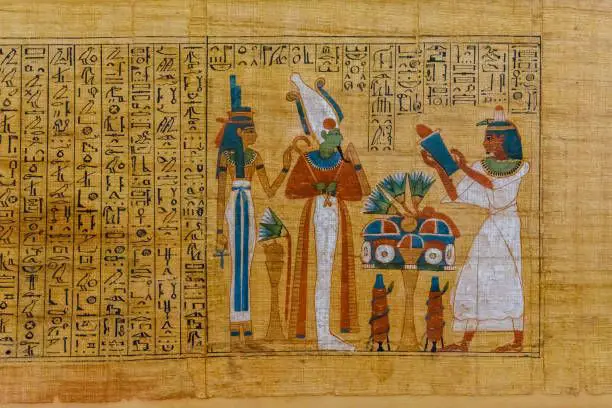
The Pyramid Texts are a collection of ancient Egyptian religious texts that were carved into the walls of pyramids during the Old Kingdom period (c. 2686 BCE – 2181 BCE).
They are some of the oldest religious texts in the world and provide valuable insights into the religious beliefs and practices of ancient Egypt.
The Pyramid Texts were written in the hieroglyphic script and were intended to help the pharaohs of Egypt in their journey to the afterlife.
The texts contain spells, prayers, and hymns that were believed to help the pharaohs overcome the challenges they would face in the afterlife and achieve eternal life among the gods.
The Pyramid Texts were initially reserved for the pharaohs and their families, but they eventually became more widely used and were included in the tombs of high-ranking officials and members of the royal court.
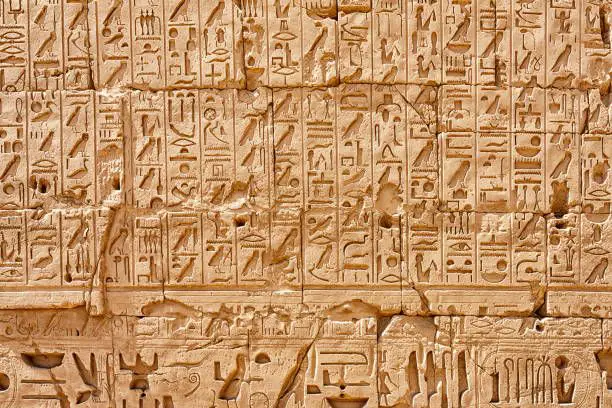
The texts were also expanded over time, with new spells and hymns added to the collection. The Pyramid Texts are organized into spells, each of which is numbered and contains a specific set of instructions or prayers.
The spells cover a wide range of topics, including the creation of the world, the journey of the soul after death, and the pharaoh's ascension to the afterlife. Many of the spells are accompanied by illustrations and diagrams that help to explain their meaning.
One of the most important themes in the Pyramid Texts is the belief in the pharaoh's divinity. The texts describe the pharaoh as a god on earth, with the power to control the forces of nature and command the obedience of his subjects.
The texts also describe the pharaoh's journey through the afterlife, where he must overcome various obstacles and challenges in order to achieve eternal life among the gods.
The Pyramid Texts provide valuable insights into the religious beliefs and practices of ancient Egypt, and they continue to be studied by scholars today.
They offer a unique glimpse into the spiritual world of the ancient Egyptians and provide a fascinating window into the culture and society of this remarkable civilization.
Pyramid Complexes

Pyramid complexes were vast architectural ensembles that were built around the pyramids of ancient Egypt.
These complexes served as important religious and cultural centers, as well as administrative hubs for the pharaohs and their royal court.
Let's explore the various elements of a pyramid complex and their significance in ancient Egyptian culture.
The Pyramid
The pyramid was the central structure of the complex and was the final resting place of the pharaoh's body. The pyramid was built on a square or rectangular base, and its walls sloped upward to form a point at the top.
The size and complexity of the pyramid varied depending on the pharaoh's wealth and power, with the largest and most impressive pyramids belonging to the most powerful rulers.
Temples
Temples were an important component of pyramid complexes and served as religious centers where the pharaohs and their priests would perform rituals and offer sacrifices to the gods.
There were usually two temples in a pyramid complex: the Valley Temple, which was located at the base of the pyramid and served as an entrance to the complex, and the Mortuary Temple, which was located adjacent to the pyramid and served as the main religious center.
Causeway
The causeway was a long, covered walkway that connected the Valley Temple to the Mortuary Temple. The causeway was usually decorated with scenes from the pharaoh's life and achievements and was used for processions during important religious festivals.
Pyramid Texts
As mentioned in a previous article, the Pyramid Texts were carved into the walls of the pyramid and were intended to help the pharaohs in their journey to the afterlife.
The texts contained spells, prayers, and hymns that were believed to help the pharaohs overcome the challenges they would face in the afterlife and achieve eternal life among the gods.
Funerary Temples
Funerary temples were located on the east side of the pyramid and served as a place of worship for the pharaoh's soul.
These temples were often decorated with scenes from the pharaoh's life and achievements and were intended to help his soul transition to the afterlife.
Queens' Pyramids
Many pyramid complexes also included smaller pyramids that were built for the pharaoh's queens and other members of his family. These pyramids were often less elaborate than the pharaoh's pyramid but still served as important burial places for the royal family.
In conclusion, pyramid complexes were vast architectural ensembles that served as important religious, cultural, and administrative centers in ancient Egypt.
They included a range of structures and elements, including the pyramid itself, temples, causeways, Pyramid Texts, funerary temples, and queens' pyramids.
These complexes provide valuable insights into the religious and cultural practices of ancient Egypt and continue to fascinate people from all over the world.
Pyramid Mysteries
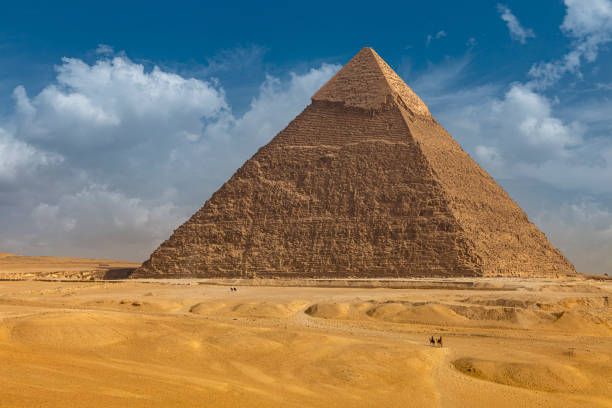
The ancient pyramids of Egypt are among the most fascinating and mysterious structures in the world.
These massive monuments were built more than 4,500 years ago, and their construction techniques, purpose, and meaning continue to puzzle archaeologists, historians, and scholars to this day.
Let's explore some of the most intriguing pyramid mysteries that continue to captivate the world.
Construction Techniques
One of the most enduring mysteries of the pyramids is how the ancient Egyptians were able to build these massive structures without the use of modern technology.
The pyramids were built using huge blocks of limestone and granite, some of which weighed as much as 80 tons. The precision with which these blocks were cut and fitted together is remarkable, and the means by which they were transported and raised to their final positions is still a subject of debate among scholars.
Purpose
While the pyramids were built as tombs for the pharaohs and their queens, the question of why they were built in the first place remains a mystery.
Some scholars argue that the pyramids were intended to serve as a bridge between the pharaoh's earthly life and his afterlife, while others suggest that they were intended to showcase the pharaoh's wealth and power.
Alignment with the Stars
The pyramids are aligned with remarkable precision to the cardinal directions of north, south, east, and west.
Some scholars believe that this alignment was intentional and that the pyramids were designed to align with the stars and the constellations.
Others suggest that the alignment was simply a practical consideration for the construction of the pyramids.
Hidden Chambers
Despite centuries of exploration and excavation, there are still hidden chambers and passages within the pyramids that have yet to be fully explored.
Some scholars believe that these chambers may contain valuable artifacts and secrets that have yet to be uncovered.
Pyramid Texts
The Pyramid Texts, as mentioned in a previous article, are a collection of ancient Egyptian religious texts that were carved into the walls of the pyramids.
These texts contain spells, prayers, and hymns that were intended to help the pharaohs in their journey to the afterlife. While much is known about the Pyramid Texts, there are still many mysteries and enigmas that continue to baffle scholars.
In conclusion, the pyramids of Egypt continue to be a source of fascination and mystery for people from all over the world.
While we have learned a great deal about these ancient structures over the years, there are still many unanswered questions and puzzles that continue to captivate our imagination.
The enduring mysteries of the pyramids remind us of the ingenuity and creativity of the ancient Egyptians and their remarkable achievements in architecture, engineering, and religion.
Exploring the ancient pyramids of Egypt is an unforgettable experience that offers insight into one of the most advanced civilizations in history. Whether you are fascinated by the construction techniques used to build these massive structures or the mysteries that still surround them, there is much to discover in the world of the pyramids.
